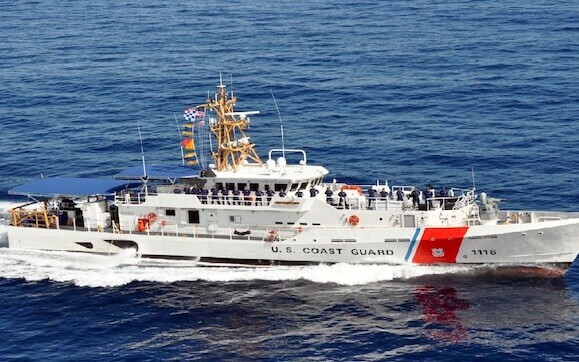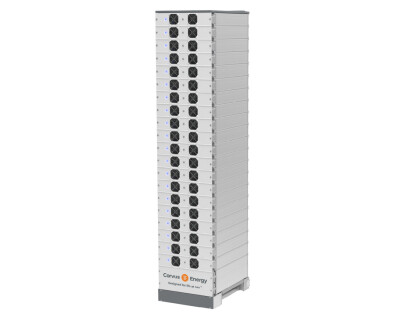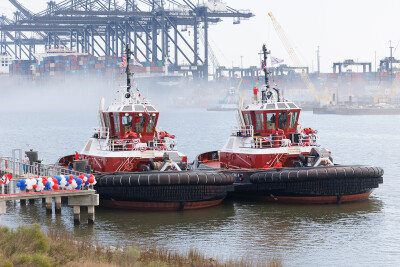A fatal collision last year between a Coast Guard cutter and a small fishing boat off Puerto Rico resulted from the crews of both vessels failing to maintain a proper lookout, the National Transportation Safety Board (NTSB) reported in its recent findings about the Aug. 8, 2022, accident.
The NTSB called on the Coast Guard to equip its cutters with voyage data recorders — after its investigators were frustrated by the refusal of some ranking cutter crewmembers to talk about what led to the collision between the Winslow Griesser, a 154' fast response cutter, and the Desakata, a 23' center console boat. The incident took place four miles off Dorado, Puerto Rico, on the north coast of the island.
Fisherman Carlos Rosario died and his brother Samuel Rosario Beltrán was injured in the accident.
While faulting both the cutter crew and fishermen for failing to keep adequate lookout, the NTSB report also suggests that a radar reflector or Automatic Identification System (AIS) transponder on the Desakata might have alerted the cutter crew and fishermen that they were on a collision course.
The NTSB findings should be a caution to mariners in increasingly crowded waters like the New York Bight.
The recreational boating industry continues its upswing after Covid-19’s retreat, while shipping traffic escalates and offshore wind developers are on the verge of building new turbine arrays as close as eight nautical miles off New Jersey beaches — alongside vessel separation lanes to New York Harbor, nearshore tug and tow routes, and busy small fishing ports.
“The NTSB continues to investigate tragedies like this collision in which vessels are not maintaining proper lookout,” the board’s chair, Jennifer Homendy, said in announcing release of the report.
“Early detection of a vessel is critical to avoiding a collision,” she continued. “While technology does not remove the need to maintain a proper lookout, it can aid in early detection, which is why we are issuing a safety alert for small vessels to encourage installing a radar reflector and/or an Automatic Identification System transponder to improve their detectability.”
NTSB investigators found that the bridge crew on the Winslow Griesser was unaware they had hit anything until a crewmember saw the wreckage of the 23-footer floating down the side of the cutter.
“Maintaining a proper lookout, by sight and sound, is a fundamental rule of the Convention on the International Regulations for Preventing Collision at Sea,” the NTSB said in introducing its findings. The agency also called on the Coast Guard to install voyage data recorders on its cutters, which would have aided investigators in reconstructing the accident sequence.
The agency’s report notes that three ranking crewmembers — then-vessel commander Lt. Cmdr. Benjamin Williamsz, the officer of the deck, and the quartermaster of the watch — declined investigators’ requests for interviews based on advice of their legal counsel.
Williamsz was relieved in February 2023 by Rear Adm. Brendan C. McPherson, commander of the Seventh Coast Guard District, based in Miami, “due to a loss of confidence in Williamsz’s ability to effectively command the cutter,” the Coast Guard said at the time.
In their report, NTSB investigators say that “had the Winslow Griesser been equipped with a voyage data recorder, or its equivalent, investigators would have been provided with additional critical factual information about the collision, which could help identify potential safety issues and result in safety improvements.”
The agency also issued a safety alert encouraging owners of recreational boats and small commercial fishing vessels to install radar reflectors and use simplified AIS transponders to improve their boats’ detectability by other vessels.
“Contributing factors, investigators said, included the failure of the Winslow Griesser’s commanding officer and officer of the deck to take sufficient measures to increase situational awareness while the cutter was traveling at a high speed.”
“As the only independent investigator of U.S. Coast Guard casualties, it is vital that NTSB investigators have information from voyage data recorders or equivalent capabilities to ensure a complete, timely and thorough investigation,” said Homendy of the NTSB. “Voyage data recorders, like black boxes in airplanes, are one of the most valuable sources of information following a marine casualty, and it is imperative that Coast Guard cutters be equipped with this technology.”





[5] copy.png.small.400x400.png)